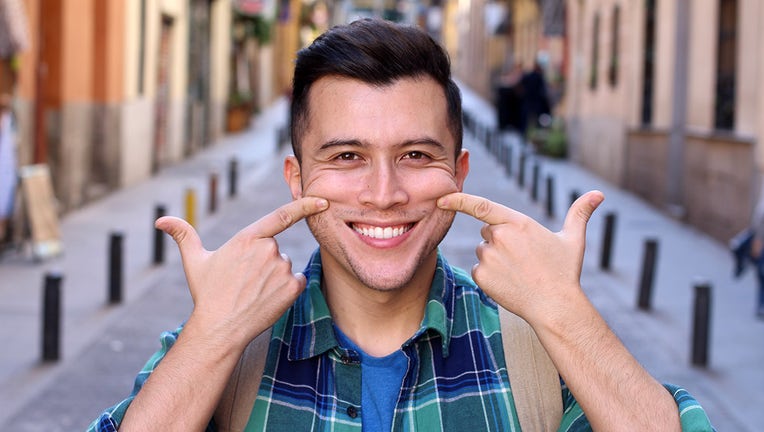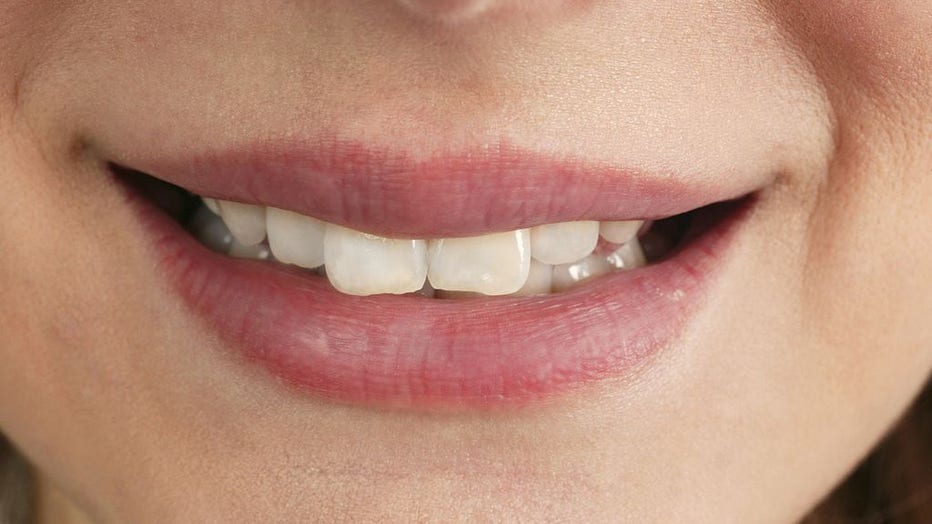Forcing a smile might put you in a better mood, research suggests

(Photo: ajr_images / iStock / Getty Images Plus)
Posing with a smile may make you happier, according to a new paper by an international team of researchers.
We naturally smile when we’re happy. But the question of whether doing the opposite — posing our muscles into a smile to improve our mood — has been part of a long-standing debate among psychology researchers. This idea of facial expressions influencing our emotions is known as the facial feedback hypothesis.
The recent scientific paper, published on Oct. 20 in Nature Human Behavior, found strong evidence that posed smiles can, in fact, improve one’s mood.
It was led by Stanford research scientist Dr. Nicholas Coles, who noted how the effect isn’t strong enough to overcome a condition like depression but could provide better insight into human emotions and their origins.
"We experience emotion so often that we forget to marvel at just how incredible this ability is. But without emotion, there’s no pain or pleasure, no suffering or bliss, and no tragedy and glory in the human condition," Coles said in a statement. "This research tells us something fundamentally important about how this emotional experience works."
Prior to the research, Coles said he considered himself "a fence-sitter" when it comes to the facial feedback hypothesis. Previous research on the subject has brought mixed results, so he sought to "settle the matter in a way that would convince both skeptics and believers," Standford University wrote in a post about the paper.

FILE - A smiling mouth is pictured in an undated file image. (Photo by Universal Images Group via Getty Images)
More happiness observed from posing smiles
Coles formed a group called the "Many Smiles Collaboration," which included researchers on both sides of the facial feedback issue from around the world. The analyzed data from 3,878 participants across 19 countries. The data included three techniques designed to encourage study participants to activate their smile muscles, researchers said.
One-third of the participants used the "pen-in-mouth method," which is when an individual puts a pen or pencil in their teeth without letting their lips touch it in an attempt to activate the same muscles as a smile, according to the researchers.
Another third of the participants were asked to mimic the facial expressions seen in photos of smiling actors, while the final third was given instructions to move the corners of their lips toward their ears and lift their cheeks using their facial muscles.
In each group, half of the participants performed the task while looking at images of puppies, kittens, flowers, and fireworks, while the other half saw a blank screen, the researchers said. They also saw the same types of images while being directed to use neutral facial expressions.
To hide the ultimate goal of the trial, the researchers also had the participants do other small tasks, such as solving simple math problems or physical tasks ("Place your left hand behind your head and blink your eyes once per second for 5 seconds").
After completing each task, the participants rated how happy they were feeling. They also rated their anger, tiredness, and confusion.
The results showed a noticeable increase in happiness from participants mimicking the smiling actors or pulling their mouths toward their ears. But similar to previous studies, they didn’t find a strong mood change in participants using the pen-in-mouth technique.
Coles said the team isn’t sure why the pen-in-mouth condition wasn’t as reliable.
"Going into the study, we assumed that all three techniques created the correct muscular configuration for an expression of happiness. But we found some evidence that the pen-in-mouth condition may not be actually creating an expression that closely resembles smiling," he added.
Coles noted how holding a pen in the mouth may require some level of teeth-clenching, which usually isn’t present in a genuine smile. Regardless, the other techniques provided evidence to suggest that human emotions are somehow linked to muscle movements, the researchers said.
"The stretch of a smile can make people feel happy, and the furrowed brow can make people feel angry; thus, the conscious experience of emotion must be at least partially based on bodily sensations," Coles said.
He continued: "Over the past few years, the science took one step back and a few steps forward. But now we’re closer than ever to understanding a fundamental part of the human condition: emotion."
This story was reported from Cincinnati.


